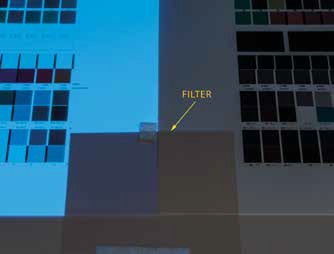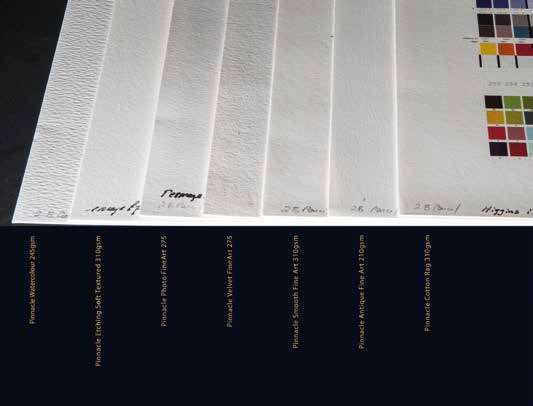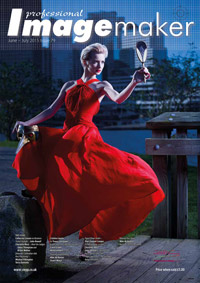articles/Paper/paper-spectrum-page3
The Great Paper Chase - Paper Spectrum Pinnacle Paper Range - part 3 of 1 2 3 4 5 6 7 8 9 10 11
by Mike McNamee Published 01/06/2015

Base Properties
The visual appearance of a paper depends upon its finish, texture, base tone and brightness. The colour parameters of the 'white' may be most easily represented in the Lab plot. As shown, the cooler, brighter papers are towards the base of the chart; the neutral and warm papers are around and above the neutral point (0:0 in the graph). The higher above the neutral point, the warmer and creamier the base tone.
An additional complication in all this is the presence of OBAs. These cool and brighten a paper/image but only in the presence of ultraviolet light, which is contained in most common light sources, but in varying degrees. If you illuminate in pure UV you show quite spectacular differences in the properties of the paper's bases. These cool, brighter papers produce more 'pop' to an image at the expense of the yellows, which are slightly depressed and skin tones which migrate towards more magenta-blue and look less saturated (ie less tanned in Caucasian skin tones). Almost universally, papers without brighteners produce the most accurate colour data, which is not the same thing as the most pleasing print! The down side of OBAs is fading with age and exposure to light, and that they do not work if the image is framed behind UV-filtered glass (see image below).

Textural properties can only be assessed with a print in the hand. The best we can do is show you the textures by photographing in low-angle light to exaggerate things. The textures in the Pinnacle range vary from shiny gloss, through lustre and satin, flat matt finishes and finally a variety of increasingly textured watercolour-like finishes from mould-made papers.
Please Note:
There is more than one page for this Article.
You are currently on page 3
- The Great Paper Chase - Paper Spectrum Pinnacle Paper Range page 1
- The Great Paper Chase - Paper Spectrum Pinnacle Paper Range page 2
- The Great Paper Chase - Paper Spectrum Pinnacle Paper Range page 3
- The Great Paper Chase - Paper Spectrum Pinnacle Paper Range page 4
- The Great Paper Chase - Paper Spectrum Pinnacle Paper Range page 5
- The Great Paper Chase - Paper Spectrum Pinnacle Paper Range page 6
- The Great Paper Chase - Paper Spectrum Pinnacle Paper Range page 7
- The Great Paper Chase - Paper Spectrum Pinnacle Paper Range page 8
- The Great Paper Chase - Paper Spectrum Pinnacle Paper Range page 9
- The Great Paper Chase - Paper Spectrum Pinnacle Paper Range page 10
- The Great Paper Chase - Paper Spectrum Pinnacle Paper Range page 11
1st Published 01/06/2015
last update 09/12/2022 14:57:21
More Paper Articles
There are 9 days to get ready for The Society of Photographers Convention and Trade Show at The Novotel London West, Hammersmith ...
which starts on Wednesday 14th January 2026





